#polygon annotation services
Explore tagged Tumblr posts
Text
Polygon Annotations
The Power of Polygon Annotations: Boosting Data Accuracy with Infosearch BPO https://www.infosearchbpo.com/bpo-news/the-power-of-polygon-annotations-boosting-data-accuracy-with-infosearch-bpo/

Infosearch provides outstanding polygon annotation services for machine learning for various industries like agriculture, e-commerce, autonomous vehicles etc. Outsource your annotation services to us and we will deliver accurate annotated datasets to enhance your machine learning models. https://www.infosearchbpo.com/polygon-annotation-services.php
polygonAnnotation #polygons #annotationServices #annotationCompany #dataAnnotation #imageAnnotation
#polygon annotation#annotation services#polygons#polygon annotation services#annotation company#image annotation#data annotation
0 notes
Text
Polygon Annotation Services | Expert Human-in-Loop Labeling
NextWealth delivers precise polygon annotation services—tracing irregular object edges for high-accuracy AI models in autonomous vehicles, medical imaging & geospatial analysis.
0 notes
Text

Turning Ripples into Real-Time Insights – Fish Tracking with Precision
Where AI Meets the Ocean
We don't just annotate data - we empower marine intelligence. Our expert team brings advanced fish tracking annotation to life with pixel-perfect precision, enabling your AI models to understand underwater movement like never before.
Whether you are working on marine conservation, aquaculture optimization, or intelligent surveillance, our tailored annotations help your systems identify, track, and analyze fish behavior, species, and swim patterns with absolute accuracy.
Polygon? Bounding box? Frame-by-frame tracking? Yes, yes, and yes — done with human expertise, backed by quality assurance at every step.
Why settle for shallow results? Dive deep with Wisepl.
What You Get: Industry-grade annotations for fish detection & tracking Frame-level consistency across videos Scalable services with quick turnaround NDAs, secure data handling & QC workflows
Let’s bring clarity to your aquatic AI vision. Reach out now to discuss your fish tracking project and see how Wisepl can help your model swim ahead of the curve!
Message us or visit www.wisepl.com to get started.
#FishTrackingAI#DataAnnotationExperts#MarineAI#DataLabeling#WiseplAnnotation#AIforOceans#UnderwaterTracking#AquacultureAI#SmartFisheries#ComputerVisionServices#DeepLearningData#WiseplWorks#AITrainingData#Wisepl
0 notes
Text
Title: Image Annotation Services Explained: Tools, Techniques & Use Cases
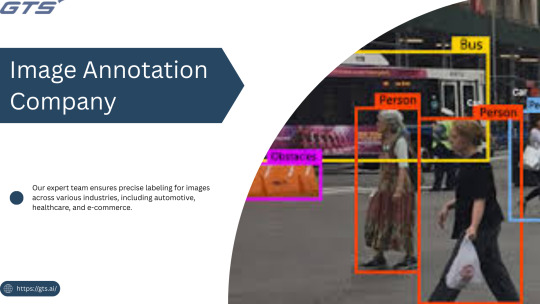
Introduction
In the fast-paced realm of artificial intelligence, Image Annotation Company serve as the foundation for effective computer vision models. Whether you are creating a self-driving vehicle, an AI-driven medical diagnostic application, or a retail analytics solution, the availability of high-quality annotated images is crucial for training precise and dependable machine learning models. But what precisely are image annotation services, how do they function, and what tools and methodologies are utilized? Let us explore this in detail.
What Is Image Annotation?
Image annotation refers to the practice of labeling or tagging images to facilitate the training of machine learning and deep learning models. This process includes the identification of objects, boundaries, and features within images, enabling AI systems to learn to recognize these elements in real-world applications. Typically, this task is carried out by specialized image annotation firms that employ a combination of manual and automated tools to guarantee precision, consistency, and scalability.
Common Image Annotation Techniques
The appropriate annotation method is contingent upon the specific requirements, complexity, and nature of the data involved in your project. Among the most prevalent techniques are:
Bounding Boxes:
Utilized for identifying and localizing objects by encasing them in rectangular boxes, this method is frequently applied in object detection for autonomous vehicles and security systems.
Polygon Annotation:
Best suited for objects with irregular shapes, such as trees, buildings, or road signs, this technique allows for precise delineation of object edges, which is essential for detailed recognition tasks.
Semantic Segmentation:
This approach assigns a label to every pixel in an image according to the object class, commonly employed in medical imaging, robotics, and augmented/virtual reality environments.
Instance Segmentation:
An advancement over semantic segmentation, this method distinguishes between individual objects of the same class, such as recognizing multiple individuals in a crowd.
Keypoint Annotation:
This technique involves marking specific points on objects and is often used in facial recognition, human pose estimation, and gesture tracking.
3D Cuboids:
This method enhances depth perception in annotation by creating three-dimensional representations, which is vital for applications like autonomous navigation and augmented reality.
Popular Image Annotation Tools
Image annotation can be executed utilizing a diverse array of platforms and tools. Notable examples include:
LabelImg: An open-source tool designed for bounding box annotations,
CVAT: A web-based application created by Intel for intricate tasks such as segmentation and tracking,
SuperAnnotate: A robust tool that merges annotation and collaboration functionalities,
Labelbox: A comprehensive platform featuring AI-assisted labeling, data management, and analytics,
VGG Image Annotator (VIA): A lightweight tool developed by Oxford for efficient annotations.
Prominent annotation service providers like GTS.AI frequently employ a blend of proprietary tools and enterprise solutions, seamlessly integrated with quality assurance workflows to fulfill client-specific needs.
Real-World Use Cases of Image Annotation
Image annotation services play a vital role in various sectors, including:
Autonomous Vehicles
Object detection for identifying pedestrians, vehicles, traffic signs, and road markings.
Lane detection and semantic segmentation to facilitate real-time navigation.
Healthcare
Annotating medical images such as X-rays and MRIs to identify tumors, fractures, or other abnormalities.
Training diagnostic tools to enhance early disease detection.
Retail and E-commerce:
Implementing product identification and classification for effective inventory management.
Monitoring customer behavior through in-store camera analytics.
Agriculture:
Assessing crop health, detecting pests, and identifying weeds using drone imagery.
Forecasting yield and optimizing resource allocation.
Geospatial Intelligence:
Classifying land use and mapping infrastructure.
Utilizing annotated satellite imagery for disaster response.
Why Work with a Professional Image Annotation Company?
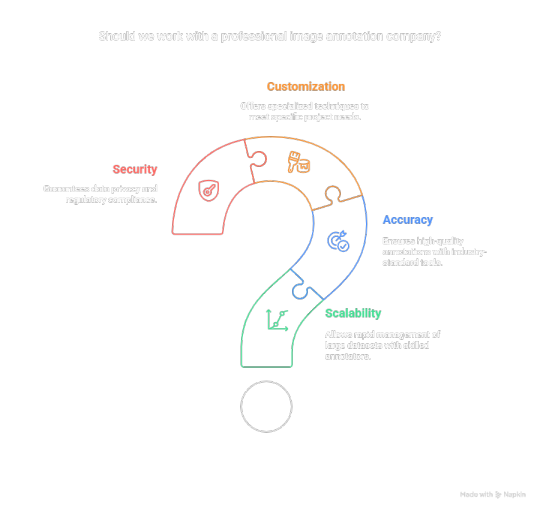
Although in-house annotation may initially appear feasible, expanding it necessitates significant time, resources, and a comprehensive quality assurance process. This is the reason businesses collaborate with providers such as GTS.AI:
Scalability : Allows for the rapid management of extensive datasets through skilled annotators;
Accuracy : Is ensured with industry-standard tools and quality assurance measures;
Customization : Coffers specialized annotation techniques to meet specific project objectives; and
Security : Guarantees adherence to data privacy regulations for sensitive data.
Final Thoughts
With the expansion of AI and computer vision applications, the necessity for high-quality annotated data has become increasingly vital. Image annotation services have evolved from being merely supportive functions to becoming strategic assets essential for developing dependable AI systems. If you aim to enhance your AI projects through professional data labeling, consider Globose Technology Solution .AI’s Image and Video Annotation Services to discover how they can effectively assist you in achieving your objectives with accuracy, efficiency, and scalability.
0 notes
Text
Image Annotation Services
Image annotation services play a crucial role in training AI and machine learning models by accurately labeling visual data. These services involve tagging images with relevant information to help algorithms recognize objects, actions, or environments. High-quality image annotation services ensure better model performance in autonomous driving, facial recognition, and medical imaging applications. Whether it’s bounding boxes, polygons, or semantic segmentation, precise annotations are essential for AI accuracy. Partnering with expert providers guarantees scalable and reliable image labeling solutions.
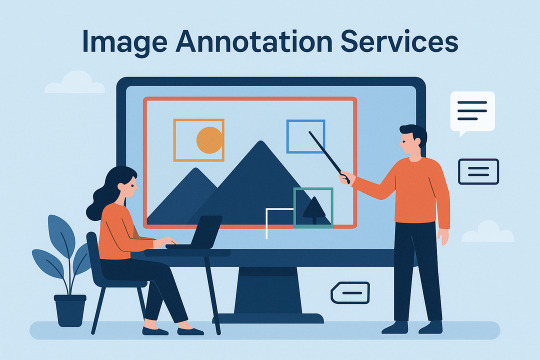
0 notes
Text
Video Annotation Services: Enhancing AI with Superior Training Data
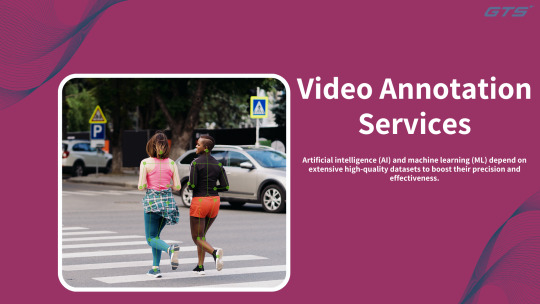
Introduction:
Artificial intelligence (AI) and machine learning (ML) depend on extensive high-quality datasets to boost their precision and effectiveness. A vital aspect of this endeavor is Video Annotation Services, a method employed to label and categorize various objects, actions, and events within video content. By supplying AI models with meticulously annotated video data, organizations can refine their AI solutions, rendering them more intelligent and dependable.
What is Video Annotation?
Video annotation refers to the process of appending metadata to video frames to facilitate the training of AI and ML algorithms. This process includes tagging objects, monitoring movements, and supplying contextual information that aids AI systems in comprehending and interpreting visual data. It is crucial for various applications, including autonomous driving, medical imaging, security surveillance, and beyond.
The Importance of High-Quality Training Data
The performance of AI models is significantly influenced by the quality of the data utilized for training. Inaccurately labeled or subpar data can result in erroneous predictions and unreliable AI outcomes. High-quality video annotation guarantees that AI models can:
Precisely identify and categorize objects.
Monitor movements and interactions within a scene.
Enhance real-time decision-making abilities.
Minimize errors and reduce false positives.
Essential Video Annotation Techniques
Bounding Boxes – These are utilized to outline objects within a video frame using rectangular shapes.
Semantic Segmentation – This technique involves labeling each pixel in a frame to achieve precise object identification.
Polygon Annotation – This method creates accurate boundaries around objects with irregular shapes.
Keypoint and Landmark Annotation – This identifies specific points on objects, facilitating facial recognition and pose estimation.
3D Cuboid Annotation – This technique incorporates depth information for artificial intelligence models applied in robotics and augmented/virtual reality environments.
The Role of Video Annotation Services in Advancing AI Applications
Autonomous Vehicles
Video annotation plays a vital role in training autonomous vehicles to identify pedestrians, other vehicles, traffic signals, and road signs.
Healthcare and Medical Imaging
AI-driven diagnostic tools depend on video annotation to identify irregularities in medical scans and to observe patient movements.
Security and Surveillance
AI-enhanced surveillance systems utilize annotated videos to recognize suspicious behavior, monitor individuals, and improve facial recognition capabilities.
Retail and Customer Analytics
Retailers employ video annotation to study customer behavior, monitor foot traffic, and enhance store layouts.
Reasons to for Professional Video Annotation Services
Engaging expert video annotation services offers several advantages:
Enhanced Accuracy – Skilled annotators deliver meticulous data labeling, minimizing errors during AI training.
Scalability – Professional services are equipped to manage extensive datasets with ease.
Cost Efficiency – Outsourcing annotation tasks conserves time and resources by negating the necessity for internal annotation teams.
Tailored Solutions – Customized annotation methods designed for specific sectors and AI applications.
Your Reliable Partner for Video Annotation
At we offer premier video annotation services aimed at equipping AI with high-quality training data. Our expert team guarantees precise and scalable annotations across diverse industries, assisting businesses in developing more intelligent AI models.
Why Select video annotation
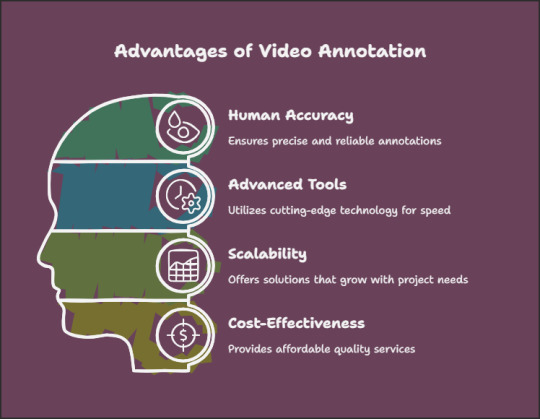
Proficient human annotators ensuring accuracy.
State-of-the-art annotation tools for expedited processing.
Scalable solutions customized to meet your project requirements.
Affordable pricing without sacrificing quality.
In Summary
Video annotation services are fundamental to AI training, ensuring that models are trained on high-quality, accurately labeled data. Whether your focus is on autonomous systems, healthcare AI, or security applications, investing in professional video annotation services like those offered by Globose Technology Solutions will significantly improve the accuracy and effectiveness of your AI solutions.
0 notes
Text
Image Annotation: The Backbone of AI and Machine Learning
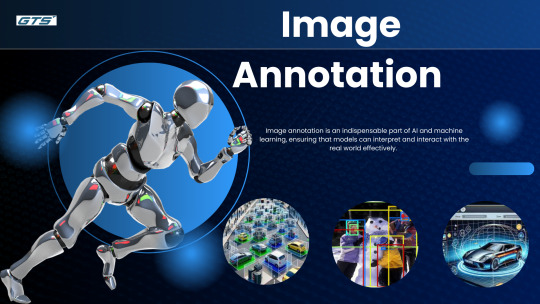
Introduction
Image Annotation serves as an essential component in the domains of artificial intelligence (AI) and machine learning (ML), facilitating the ability of machines to identify and interpret images with a level of accuracy akin to that of humans. This process is vital in various applications, ranging from autonomous vehicles to healthcare diagnostics, as it significantly contributes to the training of AI models in comprehending the visual environment.
What is Image Annotation?
Image annotation involves the systematic labeling of images with relevant metadata, thereby rendering them comprehensible to machine learning algorithms. These annotations enable AI models to detect objects, discern patterns, and recognize other features within an image. The precision of these annotations is crucial, as it directly influences the effectiveness of AI applications, underscoring its importance in the data preprocessing phase.
Types of Image Annotation
Various techniques are employed in image annotation, each designed for specific applications in artificial intelligence:
Bounding Box Annotation – This approach entails drawing rectangular boxes around objects, facilitating the detection and recognition of these objects by AI models. It is commonly utilized in object detection scenarios, such as identifying pedestrians in autonomous vehicles.
Semantic Segmentation – Rather than labeling entire objects, this technique assigns a class to each pixel within an image, enabling precise delineation of object boundaries. It is particularly beneficial in fields like medical imaging and satellite image analysis.
Keypoint Annotation – This technique involves marking specific points on objects, such as facial landmarks or human skeletal joints, which is essential for applications like facial recognition and pose estimation.
Polygon Annotation – In contrast to bounding boxes, polygon annotation offers more accurate representations of object outlines, making it suitable for identifying irregularly shaped objects, such as buildings in aerial photographs.
3D Cuboid Annotation – This method incorporates a three-dimensional perspective into objects, enhancing depth perception for AI models and aiding autonomous systems in better understanding their environment.
Polyline Annotation – This technique is utilized to indicate linear features, such as road lanes, thereby assisting self-driving vehicles in navigating effectively.
Applications of Image Annotation

Image annotation serves as a crucial element in various AI-driven sectors. Notable applications include:
Autonomous Vehicles – Self-driving technology utilizes annotated images to identify pedestrians, other vehicles, traffic signals, and potential hazards.
Healthcare – Medical AI applications leverage annotated images to identify diseases, support diagnostic processes, and improve interpretations in radiology.
Retail & E-commerce – Image recognition technology facilitates visual searches, enhances product recommendations, and streamlines automated checkout processes.
Security & Surveillance – High-quality image annotation is essential for facial recognition and anomaly detection in surveillance systems.
Agriculture – AI-enabled drones utilize annotated images of crops to evaluate health conditions and forecast yields.
Why Opt for Professional Image Annotation Services?
Manual image annotation is labor-intensive and demands a high level of accuracy. Companies such as GTS.AI focus on delivering superior image and video annotation services to guarantee precise training of AI models. Their proficiency in managing intricate annotation tasks aids businesses in optimizing AI development and enhancing model efficacy.
Conclusion
Image annotation plays a crucial role in the fields of artificial intelligence and machine learning, enabling models to accurately understand and engage with the real world. This process is vital across various applications, including autonomous vehicles, healthcare, and security, as high-quality image annotation contributes to the development of more precise and dependable AI systems. Engaging professional annotation services can greatly improve the performance of AI models, resulting in enhanced decision-making and automation capabilities.
For further information regarding image annotation services, please visit Globose Technology Solutions.
0 notes
Text
The Best Labelbox Alternatives for Data Labeling in 2025
Whether you're training machine learning models, building AI applications, or working on computer vision projects, effective data labeling is critical for success. Labelbox has been a go-to platform for enterprises and teams looking to manage their data labeling workflows efficiently. However, it may not suit everyone’s needs due to high pricing, lack of certain features, or compatibility issues with specific use cases.
If you're exploring alternatives to Labelbox, you're in the right place. This blog dives into the top Labelbox alternatives, highlights the key features to consider when choosing a data labeling platform, and provides insights into which option might work best for your unique requirements.
What Makes a Good Data Labeling Platform?
Before we explore alternatives, let's break down the features that define a reliable data labeling solution. The right platform should help optimize your labeling workflow, save time, and ensure precision in annotations. Here are a few key features you should keep in mind:
Scalability: Can the platform handle the size and complexity of your dataset, whether you're labeling a few hundred samples or millions of images?
Collaboration Tools: Does it offer features that improve collaboration among team members, such as user roles, permissions, or integration options?
Annotation Capabilities: Look for robust annotation tools that support bounding boxes, polygons, keypoints, and semantic segmentation for different data types.
AI-Assisted Labeling: Platforms with auto-labeling capabilities powered by AI can significantly speed up the labeling process while maintaining accuracy.
Integration Flexibility: Can the platform seamlessly integrate with your existing workflows, such as TensorFlow, PyTorch, or custom ML pipelines?
Affordability: Pricing should align with your budget while delivering a strong return on investment.
With these considerations in mind, let's explore the best alternatives to Labelbox, including their strengths and weaknesses.
Top Labelbox Alternatives
1. Macgence
Strengths:
Offers a highly customizable end-to-end solution that caters to specific workflows for data scientists and machine learning engineers.
AI-powered auto-labeling to accelerate labeling tasks.
Proven expertise in handling diverse data types, including images, text, and video annotations.
Seamless integration with popular machine learning frameworks like TensorFlow and PyTorch.
Known for its attention to data security and adherence to compliance standards.
Weaknesses:
May require time for onboarding due to its vast range of features.
Limited online community documentation compared to Labelbox.
Ideal for:
Organizations that value flexibility in their workflows and need an AI-driven platform to handle large-scale, complex datasets efficiently.
2. Supervisely
Strengths:
Strong collaboration tools, making it easy to assign tasks and monitor progress across teams.
Extensive support for complex computer vision projects, including 3D annotation.
A free plan that’s feature-rich enough for small-scale projects.
Intuitive user interface with drag-and-drop functionality for ease of use.
Weaknesses:
Limited scalability for larger datasets unless opting for the higher-tier plans.
Auto-labeling tools are slightly less advanced compared to other platforms.
Ideal for:
Startups and research teams looking for a low-cost option with modern annotation tools and collaboration features.
3. Amazon SageMaker Ground Truth
Strengths:
Fully managed service by AWS, allowing seamless integration with Amazon's cloud ecosystem.
Uses machine learning to create accurate annotations with less manual effort.
Pay-as-you-go pricing, making it cost-effective for teams already on AWS.
Access to a large workforce for outsourcing labeling tasks.
Weaknesses:
Requires expertise in AWS to set up and configure workflows.
Limited to AWS ecosystem, which might pose constraints for non-AWS users.
Ideal for:
Teams deeply embedded in the AWS ecosystem that want an AI-powered labeling workflow with access to a scalable workforce.
4. Appen
Strengths:
Combines advanced annotation tools with a global workforce for large-scale projects.
Offers unmatched accuracy and quality assurance with human-in-the-loop workflows.
Highly customizable solutions tailored to specific enterprise needs.
Weaknesses:
Can be expensive, particularly for smaller organizations or individual users.
Requires external support for integration into custom workflows.
Ideal for:
Enterprises with complex projects that require high accuracy and precision in data labeling.
Use Case Scenarios: Which Platform Fits Best?
For startups with smaller budgets and less complex projects, Supervisely offers an affordable and intuitive entry point.
For enterprises requiring precise accuracy on large-scale datasets, Appen delivers unmatched quality at a premium.
If you're heavily integrated with AWS, SageMaker Ground Truth is a practical, cost-effective choice for your labeling needs.
For tailored workflows and cutting-edge AI-powered tools, Macgence stands out as the most flexible platform for diverse projects.
Finding the Best Labelbox Alternative for Your Needs
Choosing the right data labeling platform depends on your project size, budget, and technical requirements. Start by evaluating your specific use cases—whether you prioritize cost efficiency, advanced AI tools, or integration capabilities.
For those who require a customizable and AI-driven data labeling solution, Macgence emerges as a strong contender to Labelbox, delivering robust capabilities with high scalability. No matter which platform you choose, investing in the right tools will empower your team and set the foundation for successful machine learning outcomes.
Source: - https://technologyzon.com/blogs/436/The-Best-Labelbox-Alternatives-for-Data-Labeling-in-2025
0 notes
Text
The Role of an Image Annotation Company in Enhancing AI Precision

Introduction
The effectiveness of Artificial Intelligence (AI) is fundamentally dependent on the quality of the data it processes, with Image Annotation Company being pivotal in elevating AI precision. Whether in autonomous vehicles, medical diagnostics, or online retail, AI systems require accurately labeled images to operate optimally. This is where an image annotation company can significantly contribute.
The Significance of Quality Image Annotation
For AI to accurately interpret and analyze visual information, it necessitates labeled images that convey valuable insights. High-quality annotations enable machine learning models to:
Precisely identify objects.
Distinguish between similar items.
Recognize anomalies in intricate settings.
Enhance decision-making based on real-world contexts.
Methods to Improve AI Precision
An image annotation company utilizes a variety of methods to boost AI precision, including:
Bounding Boxes: Essential for object detection, bounding boxes assist AI models in identifying and locating objects within images.
Semantic Segmentation: This technique divides an image into various regions, allowing AI to recognize distinct objects and comprehend contextual relationships.
Key Points and Landmark Annotation: Crucial for applications in facial recognition and pose estimation.
3D Cuboids: Employed in autonomous vehicles and robotics to facilitate depth perception and spatial awareness.
Polygon Annotation: For objects with irregular shapes, polygons provide detailed outlines, enhancing accuracy in object recognition.
The Impact of Image Annotation on AI Performance
AI models require extensive labeled data to refine their algorithms and reduce errors. By collaborating with an image annotation company, organizations can:
Improve Model Training: Well-annotated images accelerate AI learning and enhance accuracy.
Mitigate Bias in AI: Ensuring diverse and unbiased datasets fosters fairer AI predictions.
Boost Automation Efficiency: High-quality data annotations enhance the effectiveness of AI automation.
Industries Benefiting from Image Annotation
The demand for accurate image annotation is prevalent across various sectors:
Autonomous Vehicles – Self-driving cars powered by artificial intelligence depend on annotated images for tasks such as object recognition, lane detection, and identifying pedestrians.
Healthcare & Medical Imaging – Annotated medical images, including X-rays, MRIs, and CT scans, play a crucial role in diagnosing diseases and facilitating medical assessments.
Retail & E-Commerce – Features like product tagging and visual search enhance the online shopping experience for consumers.
Agriculture – AI-based solutions for monitoring crops, detecting pests, and predicting yields are supported by annotated images in the agricultural sector.
Why Collaborate with an Image Annotation Company?
Collaborating with a specialized image annotation company guarantees high levels of accuracy, consistency, and scalability. Professional annotation services offer:
Access to experienced annotators with relevant industry knowledge.
State-of-the-art annotation tools and rigorous quality control processes.
Scalable solutions capable of efficiently managing large datasets.
Conclusion
Artificial intelligence models significantly depend on well-annotated images to operate effectively. By partnering with a professional image annotation company, organizations can ensure their AI systems are equipped with high-quality data, resulting in enhanced accuracy, improved decision-making, and greater efficiency. Whether in healthcare, automotive, or retail, investing in superior image annotation is essential for realizing the full potential of AI.
How GTS.AI Make Your Project Complete?
Globose Technology Solutions is integral to our professional environment, offering high-quality, scalable, and accurate image annotation solutions that support AI models across various sectors. Its sophisticated annotation tools—including bounding boxes, semantic segmentation, and 3D cuboids—guarantee precision in training datasets for applications such as autonomous vehicles, healthcare diagnostics, and e-commerce. By utilizing AI-assisted annotation, automated quality control, and a proficient workforce, gts.ai improves efficiency, minimizes bias, and expedites AI development. Its cloud-based workflow facilitates seamless collaboration, enhancing the reliability and effectiveness of AI training, and ultimately influencing the future of intelligent automation.!
1 note
·
View note
Text
Back Office Services
The integrity of data is imperative in today’s data-driven environment. Through the polygon annotation services offered by Infosearch BPO, you can increase the value of the data and provide accurate information that can be used for different purposes. Infosearch BPO will offer the precision and accuracy needed in your development of machine learning models, autonomous automobiles, and enhanced e-commerce websites. Take your data quality a notch higher by using Infosearch BPO’s polygon annotations and realize the maximum benefits of your data-based projects.
0 notes
Text
Revolutionizing AI Development: Why GTS is the Data Labeling Company You Can Trust
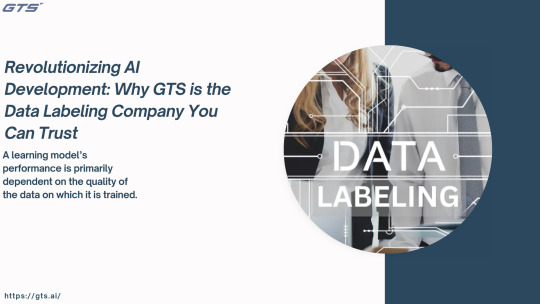
A learning model’s performance is primarily dependent on the quality of the data on which it is trained. In computer vision, accurate data labeling serves the purposes of allowing that trained model to be-uh-accurate in interpreting, processing, and analyzing the information across autonomous vehicles to healthcare. As industries start ramping up their dependence on AI solutions, the demand for a reliable data labeling company is high. Enter GTS, one of the most trusted partners for top data labeling solutions catering to various industry needs.
What is Data Labeling and Why Death is it Important, or Just the Information You Need?
And data labeling is simply tagging or annotating data, such as images, videos, texts, or audio, for training machine learning models. Labeled data enables the AI system to identify patterns, make predictions, and fairly accomplish tasks. For instance, labeled images of road signs, pedestrians, and vehicles allow the AI system to make accurate decisions while driving. Without proper data labeling, there can be failures among even the best AI algorithms. Due to the inclusion of erroneously labeled data, modeling might turn biased, leading to instances of wrong prediction and, therefore, convictions of mistakes in actual real-world deployments.
Why Choose GTS for Data Labeling?
At GTS (gts.ai), we know no two AI projects are alike; therefore, they require tailor-made solutions in order to yield good results. Here’s what sets us apart from the rest:
1. A Full Range of Labeling Services At GTS, we provide a complete lineup of data labeling services:
Image and Video Annotation: Bounding boxes, polygon annotations, semantic segmentation, and so much in this case for the autonomous vehicles, retail, and agriculture domains. Text Annotation: Named entity recognition, sentiment analysis, part-of-speech tagging to improve natural language processing models. Audio Annotation: Speech recognition, speaker identification, and sound classification improve the function of voice-activated systems.
2. Cutting-Edge Tools and Technology: With the help of advanced technologies, GTS delivers top-notch annotations at rapid speed. The platform is technology-enabled by AI tools that offer enhanced accuracy while minimizing manual workloads. 3. Experienced Workforce: There is a strong team behind every good AI model. Scalability and top-notch standards across the entire project are assured at GTS, via a worldwide fair share of highly trained annotators. 4. Data Protection and Compliance: GTS observes data privacy in the highest standards and abides by international data protection standards. Clients can rest assured that their data is handled with extreme care, thanks to full and stringent security measures. 5. Customer-Oriented: GTS believes in fostering long-term relationships with clients. Thus, its team collaborates closely with each client to understand their requirements thoroughly and offer flexible solutions according to project goals and budgets.
How GTS Is Transforming Industries
Autonomous Vehicles: The rise of self-driving technology necessitates proper image and video annotation. To this end, GTS offers high-quality labeled datasets aimed at boosting object detection, lane tracking, and pedestrian detection. Healthcare: Accurate data annotation in the medical world can sometimes lead to saving lives. GTS has annotated images for use in the medical field and in devices that assist doctors in providing care. Retail and E-commerce: GTS works with the retail sector to ensure improved AI models that enhance customer experience through product tagging and sentiment analysis. Agriculture: Through annotation of field data and satellite imagery, GTS supports precision agriculture, helping farmers monitor crop health and maximize yields.
GTS Advantage Real-World Instances
One of our clients in the autonomous driving sector encountered issues acquiring accurately labeled datasets. GTS provided annotation services that would boost its performance by a huge margin. Within months, the client started reporting better object detection performance and quicker model deployment. In another case, a healthcare startup approached GTS for support in labeling thousands of medical images. We worked with a streamlined work model that accommodated QA processes to ensure delivery within timelines, enabling the client to advance their AI-based diagnostic tool.
Conclusion
Choosing the right data labeling partner can be the decisive aspect determining the success of an AI project. Equipped with broad service ranges, cutting-edge technology, and a customer-centric approach, GTS.AI stands to make the foreground in the data labeling industry. Whether it be in automotive, healthcare, retail, or agriculture, GTS has the expertise and resources to address your data labelling needs. Looking to gain an edge in developing your AI models using the best-labeled data? Simply visit us at gts.ai and see how we can help transform your AI dreams into reality.
0 notes
Text

Powering the AI Revolution Starts with Wisepl Where Intelligence Meets Precision
Wisepl specialize in high-quality data labeling services that serve as the backbone of every successful AI model. From autonomous vehicles to agriculture, healthcare to NLP - we annotate with accuracy, speed, and integrity.
🔹 Manual & Semi-Automated Labeling 🔹 Bounding Boxes | Polygons | Keypoints | Segmentation 🔹 Image, Video, Text, and Audio Annotation 🔹 Multilingual & Domain-Specific Expertise 🔹 Industry-Specific Use Cases: Medical, Legal, Automotive, Drones, Retail
India-based. Globally Trusted. AI-Focused.
Let your AI see the world clearly - through Wisepl’s eyes.
Ready to scale your AI training? Contact us now at www.wisepl.com or [email protected] Because every smart machine needs smart data.
#Wisepl#DataAnnotation#AITrainingData#MachineLearning#ArtificialIntelligence#DataLabeling#ComputerVision#NLP#DeepLearning#IndianAI#TechKerala#StartupIndia#AIDevelopment#VisionAI#SmartDataSmartAI#PrecisionLabeling#WiseplAI#AIProjects#GlobalAnnotationPartner
0 notes
Text
Best Image Annotation Companies Compared: Features, Pricing, and Accuracy

Introduction
As applications powered by artificial intelligence, such as self-driving cars, healthcare diagnostics, and online retail, expand, image annotation has emerged as a crucial component in developing effective machine learning models. However, with numerous providers offering annotation services, how can one select the most suitable Image Annotation Companies for their requirements? In this article, we evaluate several leading image annotation companies in 2025, considering their features, pricing, and accuracy, to assist you in identifying the best match for your project.
1. GTS.AI – Enterprise-Grade Accuracy with Custom Workflows
GTS.AI is renowned for its flexible annotation pipelines, stringent enterprise security standards, and its ability to cater to various sectors such as the automotive, healthcare, and retail industries.
Key Features:
Supports various annotation types including bounding boxes, polygons, keypoints, segmentation, and video annotation.
Offers a scalable workforce that includes human validation.
Integrates seamlessly with major machine learning tools.
Adheres to ISO-compliant data security protocols.
Pricing:
Custom pricing is determined based on the volume of data, type of annotation, and required turnaround time.
Offers competitive rates for datasets requiring high accuracy.
Accuracy:
Achieves over 98% annotation accuracy through a multi-stage quality control process.
Provides annotator training programs and conducts regular audits.
Best for: Companies in need of scalable, highly accurate annotation services across various industries.
2. Labelbox – Platform Flexibility and AI-Assisted Tools
Labelbox provides a robust platform for teams seeking to manage their annotation processes effectively, featuring capabilities that cater to both internal teams and external outsourcing.
Key Features
Include a powerful data labeling user interface and software development kits,
Automation through model-assisted labeling,
Seamless integration with cloud storage and machine learning workflows.
Pricing
Options consist of a freemium tier,
Custom pricing for enterprises,
Pay-per-usage model for annotations.
Accuracy
May vary based on whether annotators are in-house or outsourced, with strong quality
Control tools that necessitate internal supervision.
This platform is ideal for machine learning teams in need of versatile labeling tools and integration possibilities.
3. Scale AI – Enterprise-Level Services for Complex Use Cases
Scale AI is a leading provider in the market for extensive and complex annotation tasks, such as 3D perception, LiDAR, and autonomous vehicle data.
Key Features:
Offers a wide range of annotation types, including 3D sensor data.
Utilizes an API-first platform that integrates with machine learning.
Provides dedicated project managers for large clients.
Pricing
Premium pricing, particularly for high-complexity data.
Offers project-based quotes.
Accuracy:
Renowned for top-tier annotation accuracy.
Implements multi-layered quality checks and human review.
Best for: Projects in autonomous driving, defense, and robotics that require precision and scale.
4. CloudFactory – Human-Centric Approach with Ethical Sourcing
CloudFactory offers a unique blend of skilled human annotators and ethical AI practices, positioning itself as an excellent choice for companies prioritizing fair labor practices and high data quality.
Key Features:
The workforce is trained according to industry-specific guidelines.
It supports annotation for images, videos, audio, and documents.
There's a strong focus on data ethics and the welfare of the workforce.
Pricing
Pricing is based on volume and is moderately priced compared to other providers.
Contracts are transparent.
Accuracy
There are multiple stages of human review.
Continuous training and feedback loops are implemented.
Best for: Companies looking for socially responsible and high-quality annotation services.
5. Appen – Global Crowd with AI Integration

Appen boasts one of the largest international crowds for data annotation, offering extensive support for various AI training data types, such as natural language processing and computer vision.
Key Features
Include a diverse global crowd with multilingual capabilities,
Automated workflows, and data validation tools,
As well as high data throughput suitable for large-scale projects.
Pricing
Appen provides competitive rates for bulk annotation tasks,
With options for pay-as-you-go and contract models.
Accuracy
The quality of data can fluctuate based on project management,
Although the workflows are robust, necessitating a quality control setup.
Best for: This service is ideal for global brands and research teams that need support across multiple languages and domains.
Conclusion: Choosing the Right Partner
The ideal image annotation company for your project is contingent upon your specific requirements:
If you require enterprise-level quality with adaptable services, Globose Technology Solution.AI is recommended.
For those seeking comprehensive control over labeling processes, Labelbox is an excellent choice.
If your project involves intricate 3D or autonomous data, Scale AI is specifically designed for such tasks.
If ethical sourcing and transparency are priorities, CloudFactory should be considered.
For multilingual and scalable teams, Appen may be the right fit.
Prior to selecting a vendor, it is essential to assess your project's scale, data type, necessary accuracy, and compliance requirements. A strategic partner will not only assist in labeling your data but also enhance your entire AI development pipeline.
0 notes
Text
Image Annotation Services: Powering AI with Precision
Image annotation services play a critical role in training computer vision models by adding metadata to images. This process involves labeling objects, boundaries, and other visual elements within images, enabling machines to recognize and interpret visual data accurately. From bounding boxes and semantic segmentation to landmark and polygon annotations, these services lay the groundwork for developing AI systems used in self-driving cars, facial recognition, retail automation, and more.
High-quality image annotation requires a blend of skilled human annotators and advanced tools to ensure accuracy, consistency, and scalability. Industries such as healthcare, agriculture, and e-commerce increasingly rely on annotated image datasets to power applications like disease detection, crop monitoring, and product categorization.
At Macgence, our image annotation services combine precision, scalability, and customization. We support a wide range of annotation types tailored to specific use cases, ensuring that your AI models are trained on high-quality, well-structured data. With a commitment to quality assurance and data security, we help businesses accelerate their AI initiatives with confidence.
Whether you're building object detection algorithms or fine-tuning machine learning models, image annotation is the foundation that drives performance and accuracy—making it a vital step in any AI development pipeline.
0 notes